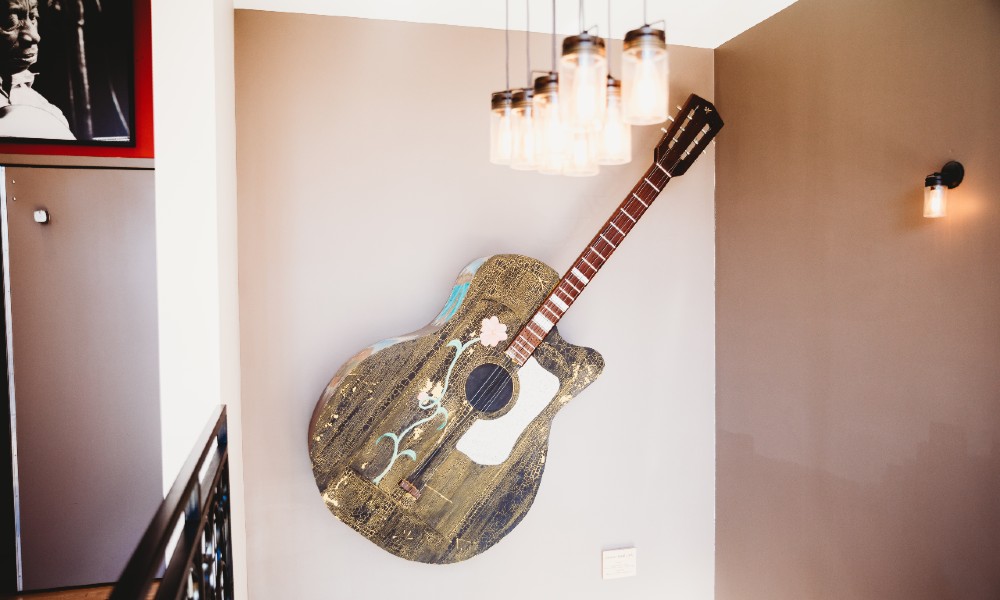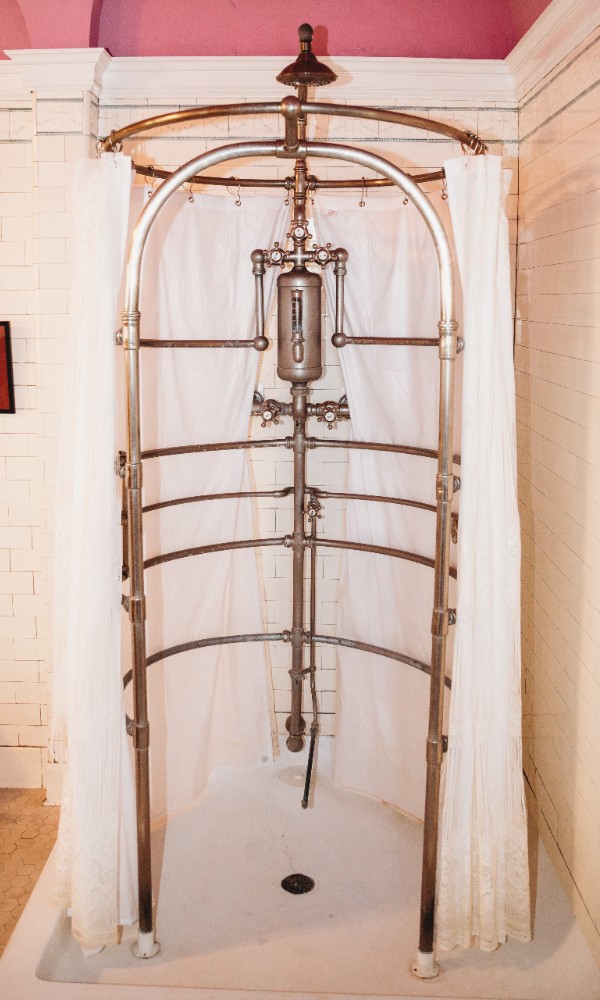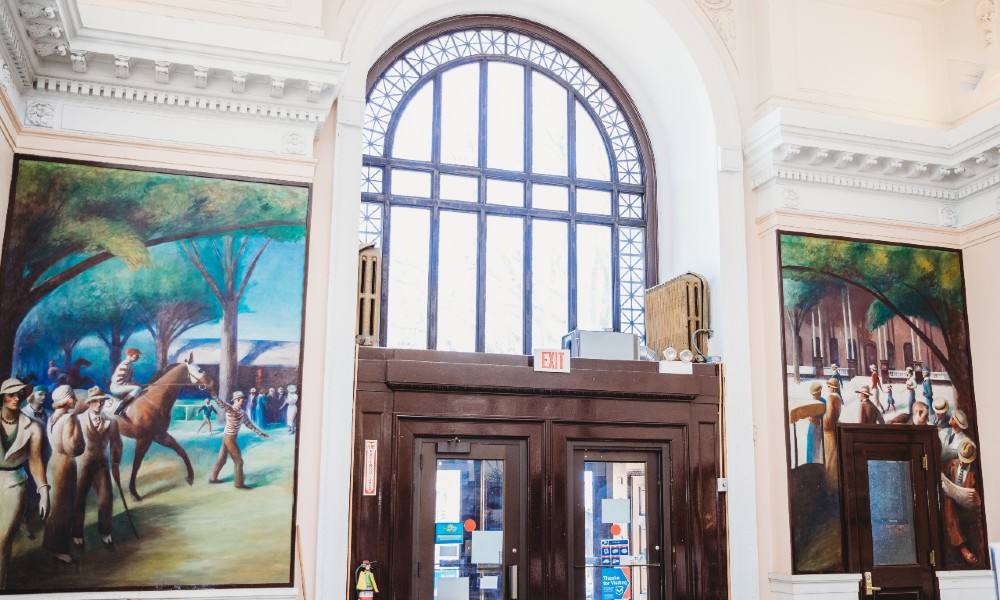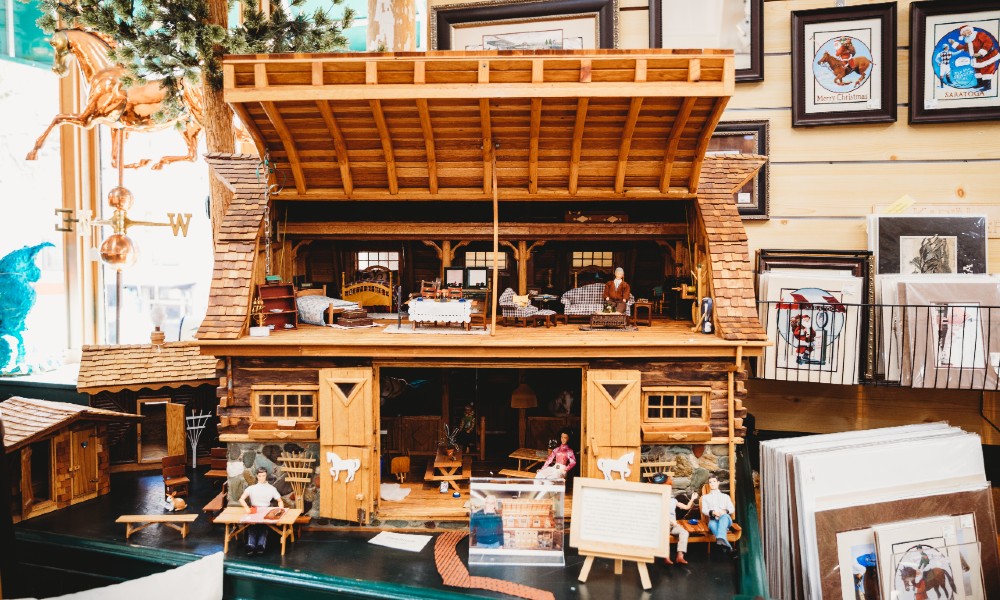After having to send Saratogians on a virtual stroll through Downtown Saratoga Springs at the height of COVID for our first installment of “Downtown Details,” now that many of the strictest restrictions have lifted, we’re now offering people an “insider’s” tour. Check it out below.
Bank Vault Doors, Lyrical Ballad Bookstore
Fifty years ago this year, Lyrical Ballad opened its Phila Street doors for the first time. The used bookstore took over a space in the former Saratoga National Bank building, inheriting a unique quirk: two bank vault doors. “We use one as a rare books vault,” says Janice DeMarco, Lyrical Ballad’s owner, “and there’s another further down the hallway that we have books in, too.” You may be thinking, if one vault houses rare books, which are of greater value than your run-of-the-mill paperback, does the door still lock? “We don’t know, because we don’t lock it,” DeMarco says. “If we ever locked that big, heavy door, I’m not sure we could get it open again.” 7 Phila St.
Torah Ark Guitar, Caffè Lena’s Lobby

The first thing you see when you walk through the doors of Caffè Lena is a huge guitar hanging on the wall in front of you. It’s not just any old hollow-body; it’s an ark, built to hold Torah scrolls, which was used during Lena board member Kevin Bright’s twin sons’ bar mitzvah in Los Angeles. (Bright, former executive producer and director of hit sitcom Friends, was Saratoga Living’s 2020 Design issue co–cover star.) When it came time to hang the massive instrument on the wall, Executive Director Sarah Craig enlisted the help of Bonacio Construction, whose owner, Sonny Bonacio, apparently gets excited by “impossible” projects. “So he sent a crew down to mount it on the wall,” says Craig. “I arrived shortly after the job was done and one of the guys said, ‘You didn’t tell us it was an 800-pound guitar!” (It’s not really 800 pounds, but you get the point.) 47 Phila St.
Cage Shower, Saratoga Dreams B&B

Forget about shower caps. This antique bathing contraption, from a time when showers were an amenity reserved for the wealthy, will keep your hair high and dry while your body gets squeaky clean. While only a few have survived to present day, one resides right here in image-conscious Saratoga. For that, thank turn-of-the-century actress and singer Lillian Russell, who believed an invigorating shower shouldn’t mess up one’s coif. She installed the then-newfangled “cage shower,” which features “needles” of water that shoot at you horizontally, rather than cascading down from above, while renting what is now the Saratoga Dreams B&B, a converted Queen Anne–style home on Union Avenue. To this day, the B&B, whose building dates back to 1887, honors those who want to stay camera ready but clean, with its “Lillian Russell Bathroom,” a pink-ceilinged room that also includes a clawfoot tub, chaise lounge and stained-glass windows. 203 Union Ave.
Paintings, Saratoga Springs Post Office

If you’ve ever waited in line at the post office in Downtown Saratoga—and who hasn’t?—chances are, your eyes have drifted to the two huge pieces of art on the entrance-side wall. Together, entitled Saratoga in Racing Season, the paintings by Guy Pène du Bois were commissioned by the 1937 Treasury Relief Art Project (TRAP), a part of President Franklin D. Roosevelt’s New Deal that employed artists to decorate federal buildings following the Great Depression. Pène du Bois’ paintings weren’t the most important New Deal project taken on in post-Depression Saratoga, though; earlier in the decade, the city itself was transformed into a tourist destination when the Reconstruction Finance Corporation commissioned the massive Saratoga Spa complex in what’s now the Spa State Park. 475 Broadway
Dollhouse, Impressions of Saratoga

The dollhouse on permanent display at Impressions of Saratoga is a one-of-a-kind masterpiece, built by Hans Hustedt, late father of Impressions’ co-owner Marianne Barker. A stone mason by trade, Hustedt first got into dollhouse making after he built his own full-sized retirement home. Impressions’ dollhouse is one of more than 20 Hustedt built during his lifetime, each of which took several months to complete and sold for anywhere from $4,000-$10,000. “He hand-cut all the logs, shingles, floorboards and beams on his table saw,” says Barker, “and laid all the stone floors, fireplaces and chimneys using pebbles and rocks we collected when at the beach or in the stream that ran through his property.” (Many of the houses’ fireplaces are fitted with flues and actually work if you put a small candle inside them.) His incredible attention to detail was evident in his unwavering work ethic, which, at least to his wife, wasn’t necessarily a good thing. “Mom would get so mad, because he wouldn’t come when she called him for a meal,” Barker says. “We finally installed an intercom to his workshop and even then, he had a hard time walking away.” 368 Broadway
